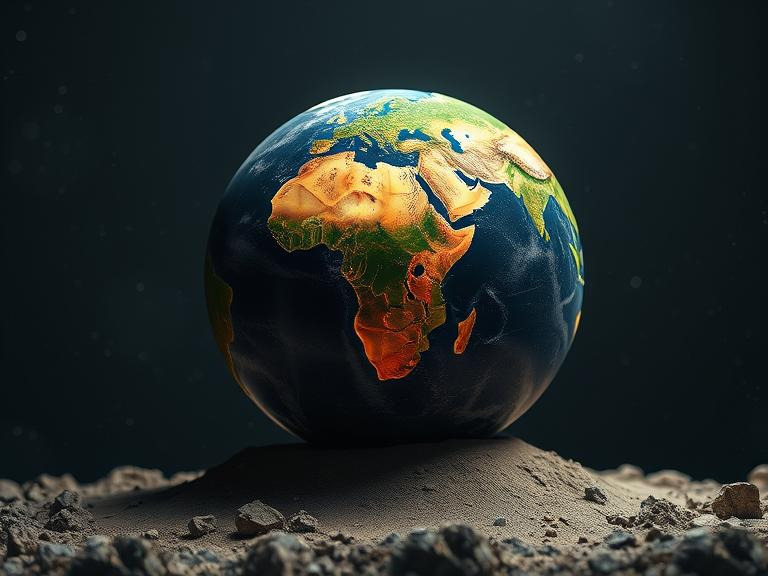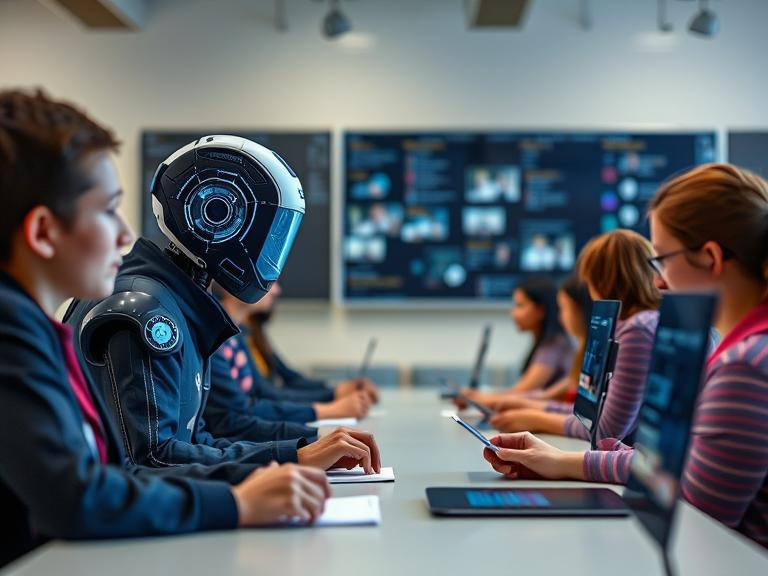In 2022, an AI-generated portrait titled Edmond de Belamy sold at Christie’s for $432,500, sparking global fascination—and outrage. Critics argued that the algorithmically produced artwork lacked the “soul” of human creation, while enthusiasts hailed it as a triumph of technological innovation. Fast-forward to 2023, and AI’s creative prowess has exploded: it composes symphonies indistinguishable from Bach, writes bestselling novels, and generates blockbuster movie scripts. Yet, as machines increasingly infiltrate domains once deemed uniquely human, urgent questions arise: Can AI truly be creative? Who owns its creations? And what happens when humans and machines collaborate?
This blog post explores AI’s growing role in art, music, and storytelling, dissecting debates over authenticity, copyright, and the ethical implications of our partnership with creative machines.

1. The Rise of the Creative Machine
From Tools to Collaborators
AI’s journey into creativity began as a tool—a paintbrush for generating textures or a metronome for refining rhythms. Today, it has evolved into a collaborator, capable of autonomous creation.
- AI as Artists: Generative Adversarial Networks (GANs) like DALL-E and MidJourney produce hyper-realistic images from text prompts, while platforms like Artbreeder let users “evolve” digital art through AI.
- AI as Musicians: Tools like OpenAI’s MuseNet and AIVA compose original scores in styles ranging from Mozart to Metallica. Startups like Endel generate personalized soundscapes based on biometric data.
- AI as Storytellers: Large language models (LLMs) like GPT-4 draft poetry, screenplays, and interactive narratives. In 2023, The Guardian published an op-ed entirely written by AI, titled A Robot Wrote This Entire Article. Are You Scared Yet, Human?
Case Study: Sunspring – The First AI-Scripted Film
In 2016, filmmaker Oscar Sharp and AI researcher Ross Goodwin trained an LSTM model on sci-fi scripts to create Sunspring, a surreal short film. The result was nonsensical yet hauntingly poetic, proving AI could generate emotionally resonant—if bizarre—stories.
2. The Authenticity Debate: Can Machines Be Truly Creative?
Defining Creativity: Human vs. Algorithmic
At the heart of the debate lies a philosophical question: What is creativity? Traditional definitions emphasize intentionality (a conscious creator), originality (novelty), and emotional expression. AI challenges all three.
Arguments Against AI Creativity
- Lack of Consciousness: AI lacks self-awareness or intent. It doesn’t “feel” inspired; it optimizes data patterns.
- Derivative Outputs: AI art is remix culture on steroids—it recycles human-made training data without context. A Picasso-esque painting generated by MidJourney isn’t groundbreaking; it’s algorithmic pastiche.
- No Emotional Depth: Can a machine convey grief, love, or joy? Critics say AI art is emotionally sterile, like a beautifully rendered but empty shell.
Arguments For AI Creativity
- Emergent Novelty: AI sometimes produces unexpected combinations (e.g., a “giraffe made of galaxies”) that humans wouldn’t conceive.
- Collaborative Potential: Artists like Refik Anadol use AI to visualize “data sculptures,” merging human vision with machine execution.
- Redefining Authorship: If creativity is about generating meaning, does it matter if the creator is human?
Case Study: Holly Herndon’s AI Baby “Spawn”
Musician Holly Herndon trained an AI on her voice to create PROTO, an album where she “duets” with her digital twin. Critics praised it as a groundbreaking exploration of human-machine symbiosis.
3. Copyright Chaos: Who Owns AI-Generated Art?
The Legal Void
Copyright law assumes a human author, leaving AI-generated works in a gray area. Current precedents:
- U.S. Copyright Office: Denied copyright for an AI-generated comic in 2023, stating “human authorship is essential.”
- EU: Proposed granting AI systems legal personhood, but the measure was shelved amid backlash.
- Japan: Awarded copyright to a human who “curated” AI-generated content.
Key Dilemmas
- Training Data Liability: AI models like Stable Diffusion are trained on billions of copyrighted images. Artists have sued Stability AI and MidJourney for “copyright laundering.”
- Output Ownership: If you prompt an AI to create a song, is it yours? The AI developer’s? Public domain?
- Deepfakes and Identity: AI-generated Drake and The Weeknd tracks like Heart on My Sleeve (2023) raise questions about voice rights.
Case Study: The Zarya of the Dawn Controversy
In 2022, Kris Kashtanova received a copyright for a graphic novel with AI-generated images, only for the U.S. Copyright Office to revoke it months later, ruling the images lacked human authorship.
4. Human-AI Collaboration: Enhancing or Eroding Creativity?
The Spectrum of Collaboration
- AI as Muse: Artists use AI to brainstorm ideas. Painter Anna Ridler trains GANs on her sketches to generate floral patterns she later paints by hand.
- AI as Co-Creator: Musician Taryn Southern released I AM AI (2017), an album co-composed with Amper AI.
- AI as Performer: The virtual pop star Hatsune Miku, powered by Vocaloid software, sells out concerts worldwide.
Benefits of Collaboration
- Democratization: Amateurs access professional-grade tools (e.g., Canva’s AI design features).
- Innovation: AI pushes creators beyond comfort zones. Author Stephen Marche used Sudowrite (an AI writing tool) to experimental effect in Death of an Author.
- Efficiency: AI handles repetitive tasks (e.g., coloring comic panels), freeing humans for high-concept work.
Risks and Criticisms
- Homogenization: Over-reliance on AI could flatten cultural diversity into algorithmically optimized “vibes.”
- Skill Erosion: Will future artists lose foundational skills if AI handles perspective, lighting, or grammar?
- Ethical Exploitation: Is it fair for corporations to profit from AI trained on underpaid or uncredited human labor?
Case Study: Refik Anadol’s Machine Hallucinations
Media artist Refik Anadol uses AI to transform vast datasets into immersive installations. His work, like Machine Hallucinations: Nature Dreams, blurs the line between human curator and machine creator.
5. The Future of Creativity: Coexistence or Competition?
Scenarios for 2040
- Dystopian Displacement: AI dominates culture, rendering human artists obsolete.
- Symbiotic Renaissance: Humans and AI collaborate to unlock new creative frontiers.
- Regulated Balance: Strict laws limit AI’s role, preserving human-led creativity.
Steps to Ensure Ethical Innovation
- Transparent Training Data: Mandate disclosure of datasets and compensate original creators.
- Hybrid Copyright Models: Split ownership between users, developers, and data contributors.
- AI Literacy Education: Teach creators to critically engage with AI tools without dependency.
Conclusion: Creativity in the Age of Machines
The rise of AI as artists, musicians, and storytellers is neither apocalypse nor utopia—it’s a mirror reflecting our values, fears, and aspirations. While AI can replicate patterns, it cannot replace the messy, subjective, and profoundly human act of creation. Yet, its potential to democratize, innovate, and inspire is undeniable.
The path forward demands nuance: robust copyright reforms, ethical AI training practices, and a cultural shift that views machines not as rivals but as partners in the eternal dance of creativity. As artist Laurie Anderson quipped, “Technology is the campfire around which we tell our stories.” Perhaps AI is simply a new flame in that ancient tradition.


